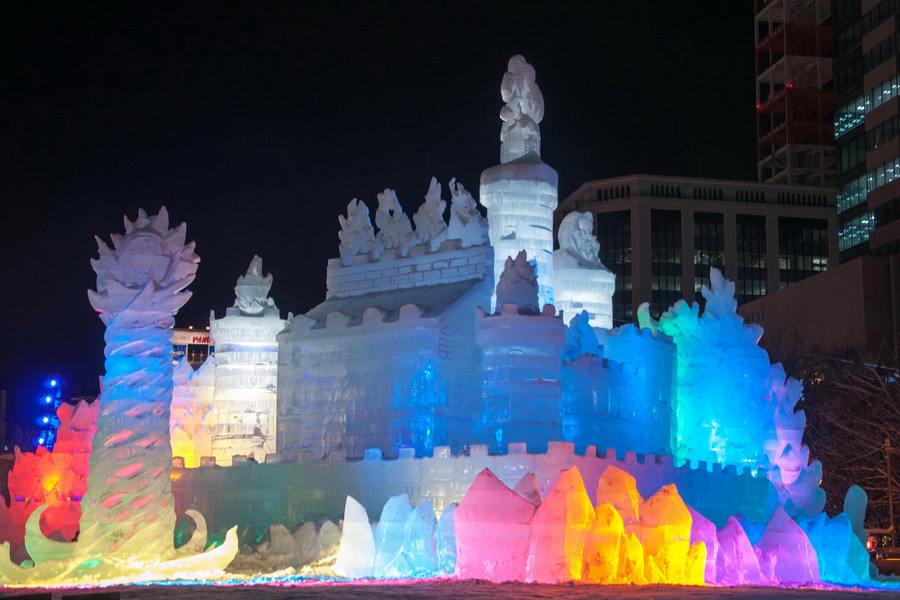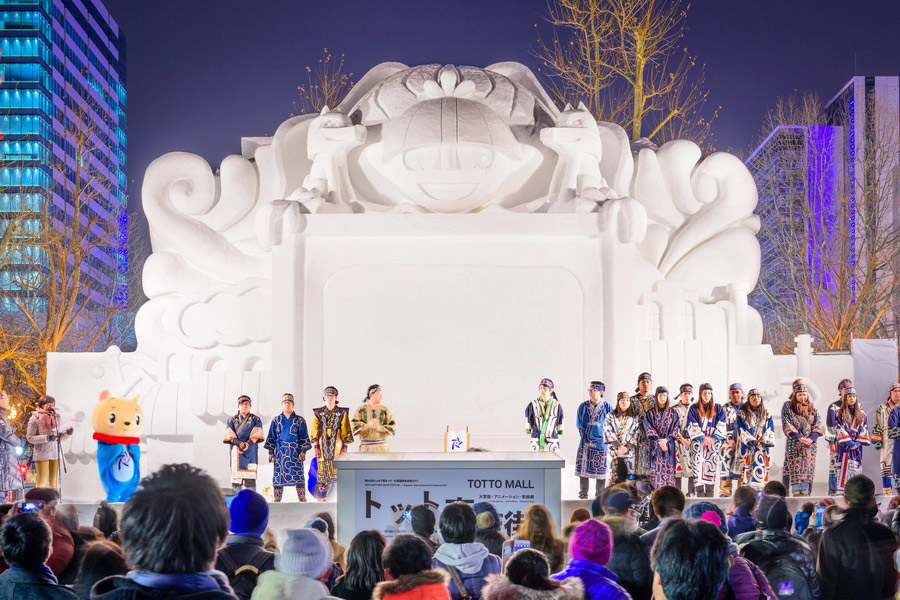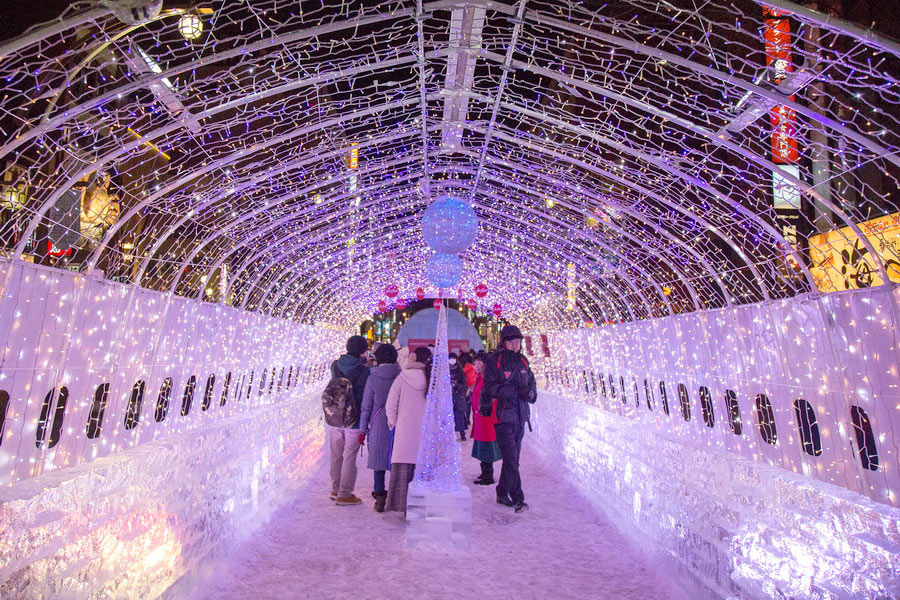
The Sapporo Snow Festival (さっぽろ雪まつり, Sapporo Yuki Matsuri), held in Sapporo (札幌市) the capital of Hokkaidō prefecture (北海道県) on Hokkaidō Island, transforms the city into a winter wonderland with magnificent snow sculptures. The festival, which takes place annually in early February, lasts a week, and the festival lasts for a week and attracts over 2 million visitors from across the globe. With average temperatures hovering around -3 °C, the sculptures remain in pristine condition throughout the event.
The festival began in 1950 when a group of schoolchildren built six snowmen in Odori Park (大通公園, Ōdōri Kōen) using snow removed from the streets. The idea captivated locals and the government alike, and the students' playful act became a city tradition. The snowman became the symbol of the festival. In 1972, during the XI Winter Olympics in Sapporo (1972年札幌オリンピック), the event gained international recognition and grew significantly in size and popularity.

Today, approximately 25 groups from around the world participate, showcasing their talent through sculptures of all kinds, ranging from characters from Japanese anime and folklore to famous personalities, landmarks, and entire palaces in both Japanese and Western styles. During the day, the sculptures gleam under the sun, while at night, multicoloured LEDs illuminate them, creating a magical ambiance.
For a breathtaking view of the illuminated sculptures, visitors can head to the nearby Sapporo TV Tower (さっぽろテレビ塔), which offers a panoramic perspective of the festival’s enchanting landscape.
The festival takes place in three main sites, all of which can be explored within a 90-minute walk: the Odori Park Site, the Susukino (すすきの) Site, and the Tsu Dome (つどーむ) Site.

In addition to the stunning ice sculptures, each location offers a variety of entertainment. Visitors can enjoy an ice rink, ski jumps, and ice slides for winter fun. There are also eateries serving local seafood and hot drinks to keep guests warm.
For those curious about the history of the festival, the Hitsujigaoka Observation Hill (羊ヶ丘展望台, Hitsujigaoka Tembōdai) features a museum with miniature sculptures and photographs of past events, providing an insight into how the festival has evolved over the years.

